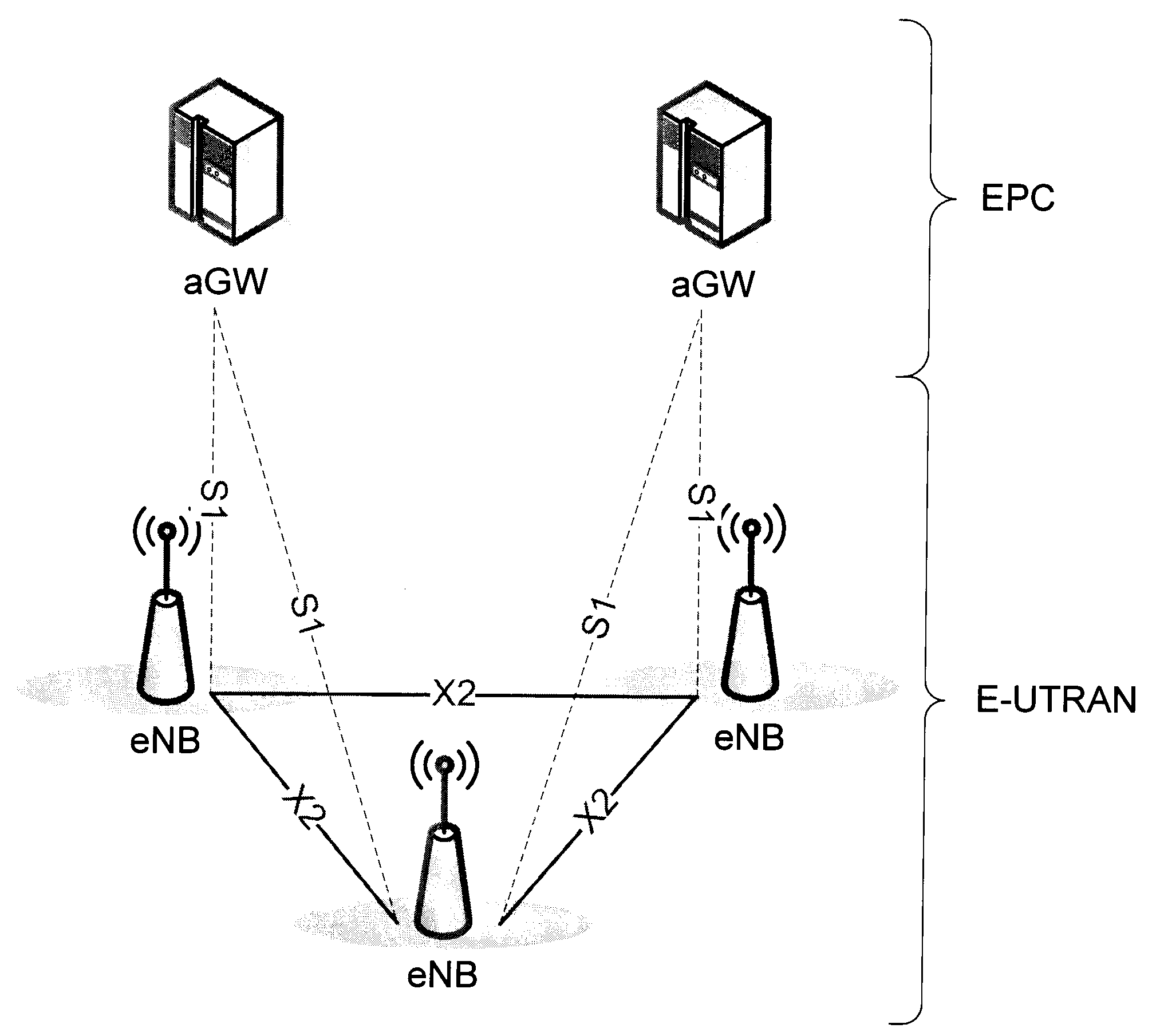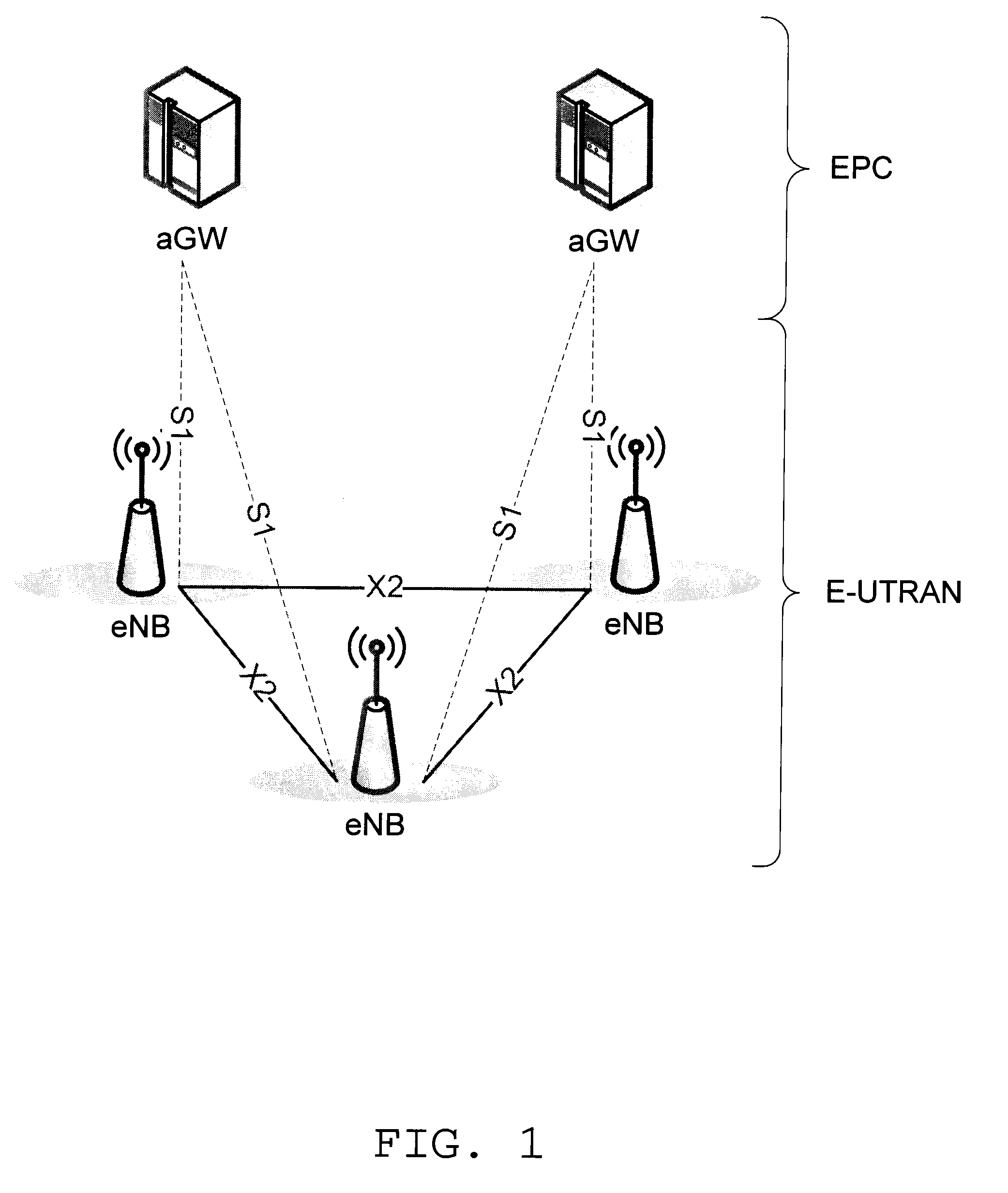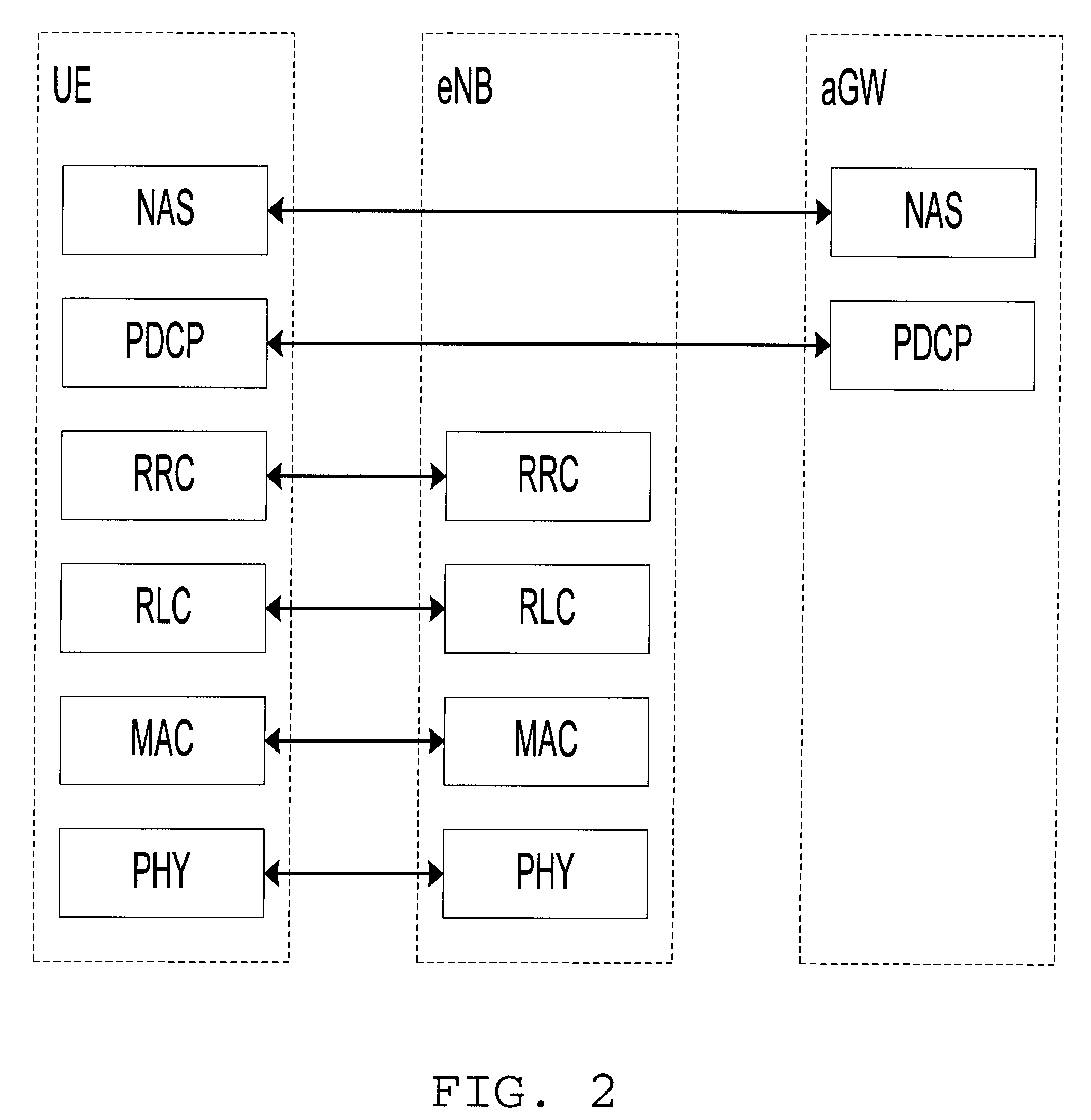Forwarding learnt state information to target node at mobility
a technology of learning state and information, applied in the field of telecommunications, can solve the problems of wasting resources to allocate dedicated transmission resources, affecting the use of communication resources in the system, and involving significant overhead
- Summary
- Abstract
- Description
- Claims
- Application Information
AI Technical Summary
Benefits of technology
Problems solved by technology
Method used
Image
Examples
Embodiment Construction
[0053]At handover, only configured RRC states or current protocol states are forwarded in the background art solutions. The Node B therefore has to spend a learning period to figure out a suitable resource allocation. During this learning period, the Node B does not have enough information to make an optimal resource allocation.
[0054]According to an embodiment of the present disclosure, learnt history information relating to a traffic behavior of the UE being handed over is proposed to be forwarded from a controller node of the source cell to a controller node of the target cell at handover, as shown in FIG. 6. The source cell controller node and target cell controller nodes may, for instance, be eNBs or another node in a communication system having a corresponding function as an eNB. The traffic behavior forwarded by this embodiment of the disclosure includes a traffic pattern in the timeplane of the UE being handed over. This traffic time pattern relates to a history of the UE in ...
PUM
 Login to View More
Login to View More Abstract
Description
Claims
Application Information
 Login to View More
Login to View More - R&D
- Intellectual Property
- Life Sciences
- Materials
- Tech Scout
- Unparalleled Data Quality
- Higher Quality Content
- 60% Fewer Hallucinations
Browse by: Latest US Patents, China's latest patents, Technical Efficacy Thesaurus, Application Domain, Technology Topic, Popular Technical Reports.
© 2025 PatSnap. All rights reserved.Legal|Privacy policy|Modern Slavery Act Transparency Statement|Sitemap|About US| Contact US: help@patsnap.com



